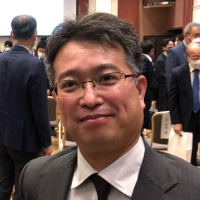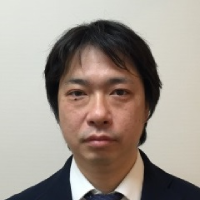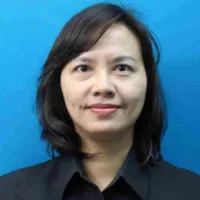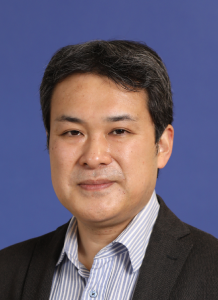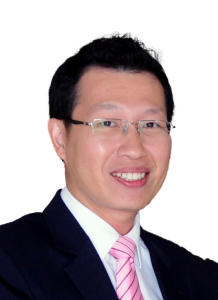Research

Research Topic 1:
Advanced Traffic Condition Estimation Methodology Using Data Fusion Techniques
Researchers-in-charge:
– Assoc. Prof. Toru Seo (Institute of Science Tokyo)
– Assist. Prof. Garavig Tanaksaranond (Chulalongkorn University)
Aim:
To develop a network-scale traffic state estimation/prediction methods using data fusion.
In this research, we will capture the state of traffic by combining data from fixed-point sensors (e.g. roadside camera) and mobile sensors (e.g. GPS data, smartphone data). Each of these data sources have their own strengths and limitations. Fixed-point sensors can count traffic volumes in the areas where the sensors are installed, however they are unable to detect congestion in areas with no sensors installed. On the other hand, mobile sensors can detect traffic jams through speed data, however since not all vehicles are equipped with mobile sensors, traffic volumes cannot be concluded from this type of data. Therefore, fusing both types of data sources will create the best mix for detailed estimation and prediction of wide-area traffic conditions.
The significance of this research is as follows:
- Highly-accurate spatio-temporal estimation of current traffic conditions and GHG emissions.
- As input data for implementing traffic control and management which can be used in other research subjects.
- Quantitative measurement of traffic control or traffic management effects (congestion, GHG emissions reduction, etc.).
Research Activities:
- Review and obtain available datasets.
- Collect new data.
- Establish data analysis system and fundamental analysis/visualization.
- Develop traffic state estimation methods and short-term traffic prediction methods using data fusion.
- Validate estimation/prediction methods with actual data and make implications for future traffic monitoring systems.

Research Topic 2:
Evaluation of Transportation Management Policies by Activity Microsimulation
Researchers-in-charge:
– Prof. Daisuke Fukuda (The University of Tokyo)
– Assoc. Prof. Veera Muangsin (Chulalongkorn University)
Aim:
To create a microsimulation that describes people’s daily movement and activity patterns creation of a platform.
In order to evaluate dynamic traffic demand management measures more thoroughly, focusing only on the road users are not sufficient. Through a mathematical model that was developed to describe the spatio-temporal activities of each individual in a day, a system was constructed to simulate the activities of the entire population of the target area. Then, the data can be used to forecast and evaluate the effects of wide-area spatio-temporal flow when urban transportation measures are implemented.
The model will take inputs from place of residence, place of work, and household attributes, as well as some environmental attributes such as transportation service, land use, etc. All the inputs will be processed in the microsimulator, alongside traffic big data (such as cell phone locations information and travel survey data), to ensure the reproducibility of current activity patterns.
The outputs will be:
- Spatio-temporal daily movement activity trajectory for each individual.
- Population stays by time zone and detailed zone.
- Time of day, origin-and-destination (OD) traffic volume.
- Life satisfaction index (life utility), etc.
Research Activities:
- Review necessary conditions for simulation analysis.
- Develop a simulation model (Activity-Based Model: ABM).
- Calibrate the ABM through data assimilation and improve reproducibility.
- Conduct multi-faceted evaluation of multimodal urban travel demand management measures.

Research Topic 3:
Development of An Urban-Scale Macro-Analysis Method of Traffic Conditions
Researchers-in-charge:
– Assoc. Prof. Kentaro Wada (University of Tsukuba)
– Assoc. Prof. Chaodit Aswakul (Chulalongkorn University)
Aim:
To develop a method for analyzing the relationship between traffic throughput and congestion propagation patterns for the entire regional road network.
This research attempts to quantify traffic performance for the entire network and identify the congestion propagation patterns that can lead to the overall network’s performance degradation and an exponential increase in CO2 emissions. A macroscopic analysis method of urban-scale traffic conditions in an oversaturated network will be developed. The research will employ key theories from Macroscopic Fundamental Diagram (MFD) for quantifying the network capacity and the Generalized Bathtub Model (GBM) for the macro approximation of traffic condition.
The research plan is divided into 2 parts. The first step is to do static analysis related to MFD and the spatial queue distribution to quantify network capacity and identify the queue pattern that results in network degradation. The second step is to do dynamic analysis, where the dynamic traffic flow will be considered for real-time prediction based on GBM.
This research will build and use quantitative assessment models for CO2 emissions through digital twin at the metropolitan area level.
Research Activities:
- Explore the traffic characteristics of the road networks.
- Conduct analysis and prediction of macroscopic traffic flow dynamics.
- Develop a method for mapping macro-micro traffic conditions.
- Construct and apply a quantitative evaluation model for CO2 emission.

Research Topic 4:
Proposal and Application of Microscopic Traffic Control Methodology
Researchers-in-charge:
– Prof. Takashi Oguchi (The University of Tokyo)
– Assoc. Prof. Sorawit Narupiti (Chulalongkorn University)
Aim:
Propose a traffic control optimization method by computing signal control with sensor information and simulation to assist police officers.
As of now, many intersections in Bangkok Metropolitan Area have their traffic signals switched by relying on manual visual inspections done by police officers. This research will propose the optimization of signal control through sensor data and simulations to better assist traffic officers in controlling the intersections.
The research will consider the results from Research Topic 1 and 2 to identify the Major Bottleneck Intersections (MBI) candidates, do site observation, and understand the characteristics of bottlenecks in the Greater Bangkok Area. In the next step, some MBIs will be selected to be further analyzed to make proposed improvements for the selected MBIs. Potential proposals may include:
- Modifying the traffic control of some intersection designs, such as lane operations, signal phasing plans, and/or traffic signal parameters.
- Proposal for policy improvements as suggested by traffic simulation study, such as enhancement of public transportation service, promotion of active transport mode use instead of private cars, and/or appropriate freight traffc demand management.
We anticipate the collaboration with local governments, regional societies, and the involvement of the general public throughout this research process which we hope will lead to the creation of a sustainable traffic system that will improve the quality of life of the Bangkok community.
Research Activities:
- Identify major bottlenecks and propose improvement measures such as traffic control system.
- Propose policy options, set priority of such options, and develop a sustainable traffic management methodologies.
Timeline and Other Works
Theme 0
Common Data Platform
The common data platform will be set up starting from the early project timeline to support data collection, compilation, and analysis for all research themes.
Theme 5
Practical Implementation
Practical implementation of traffic management to reduce green house gases based on our study results is expected to be done by the local agencies after the project is fully concluded.
